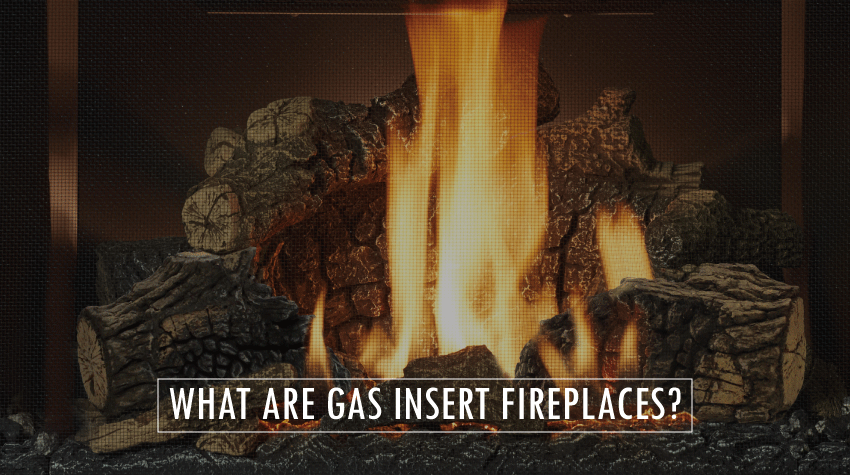Insert fireplaces are perhaps the most convenient development in house heating designs. The idea of making a fireplace that could be inserted into a pre-existing prefabricated wood fireplace was conceived in 1896 by Joab R. Donaldson. His intention was to utilize coke as fuel and integrate an electric blower into the system to improve efficiency. The use of coke saw a great reduction in the cost of heating indoor spaces. A little over a century later, fireplace inserts have become the most popular installations for heating outdoor and indoor spaces. Fireplace inserts are primarily classified based on the fuel they used. The fuel types include natural gas, coal, propane, electricity and EPA-certified wood fuel.
Gas insert fireplaces are a popular selection in many homes. Gas fireplace inserts are often installed to improve the aesthetics and efficiency of open-burning wood fireplaces. The construction of gas fireplace inserts is robust. The structure can withstand the intense heat generated in insert. The insert is also well insulated to reduce heat losses that affect efficiency. Cast iron and steel are the most common materials used to build gas insert fireplaces. The two materials are ideal for high temperature chambers due to their unique thermal properties. They both have a low heat conductivity. Moreover, steel and cast iron are hardy, decreasing the need for regular maintenance.
Most contemporary gas inserts incorporate glass doors that facilitate viewing of the flames. The glass doors are often self-cleaning. Most gas inserts have an air wash system. Clean air is run across the inner surface of the glass doors averting the build-up of deposits. Though the glass doors are for viewing, the insulated doors should remain shut to optimize the efficiency of the gas insert. Some gas inserts come with a double-sided viewing area. The insert have glass doors on both sides and make for a unique look. Such gas insert designs are fit for spaces with central columns or partial partitions between rooms.
Developers of gas inserts have augmented the function of the fireplace by including added features like fanning systems and thermostatic controls. The latest gas inserts have remote control functionality for both temperature regulation and the fan system. Gas inserts come with a multi-speed fan system that improve heat distribution in a room. Most come with a standard 3-speed function but a 5-speed function exists in some premium models. Gas inserts allow fresh air through the vents below. The air circulates in the main chamber before escaping through the vents located at the top of the unit.
If you reside in a house with an existing open fireplace and chimney, you are a perfect candidate for a gas insert. Gas inserts brag of high fuel efficiency and enhanced heat output. The inserts also provide a lovely focal point for any space. Gas inserts are made to fit any size of a hearth.
The latest gas inserts have elegant designs that blend flawlessly with any indoor or outdoor design. One of the sleekest gas inserts in the market is the Lopi Radiant Plus gas insert. The insert offers a modern expression to living spaces with its ultra-modern linear styling. The flames match the breathtaking look of the gas insert. The Radiant Plus has wide-angle flames, a realistic ceramic glowing ember bed and black enamel reflective side panels. For improved heat distribution the insert runs a variable speed twin fan system coupled with a room sealed direct vent.
Unique optional features come on the Lopi models and these set the gas inserts apart from other brands. The Lopi Radiant Plus optional features range from the functionality to the build. The door frame and fascia come in brushed or black stainless steel. The inner door frames can be black or stainless steel together with the side panels. Although a gas inserts are designed to heat up a room, a heat distribution kit coupled with an air duct can distribute heat to other rooms.
The downside to a gas insert is the cost. When compared to other fireplaces, gas inserts cost a lot. However, the gas insert is worthwhile investment. It looks good and has a long lifespan. The installation of a gas insert is also reliant on the pre-existence of a usable fireplace. This may be a disadvantage in some homes. In spite of the few cons, gas inserts are the way to go.
Read Also:
